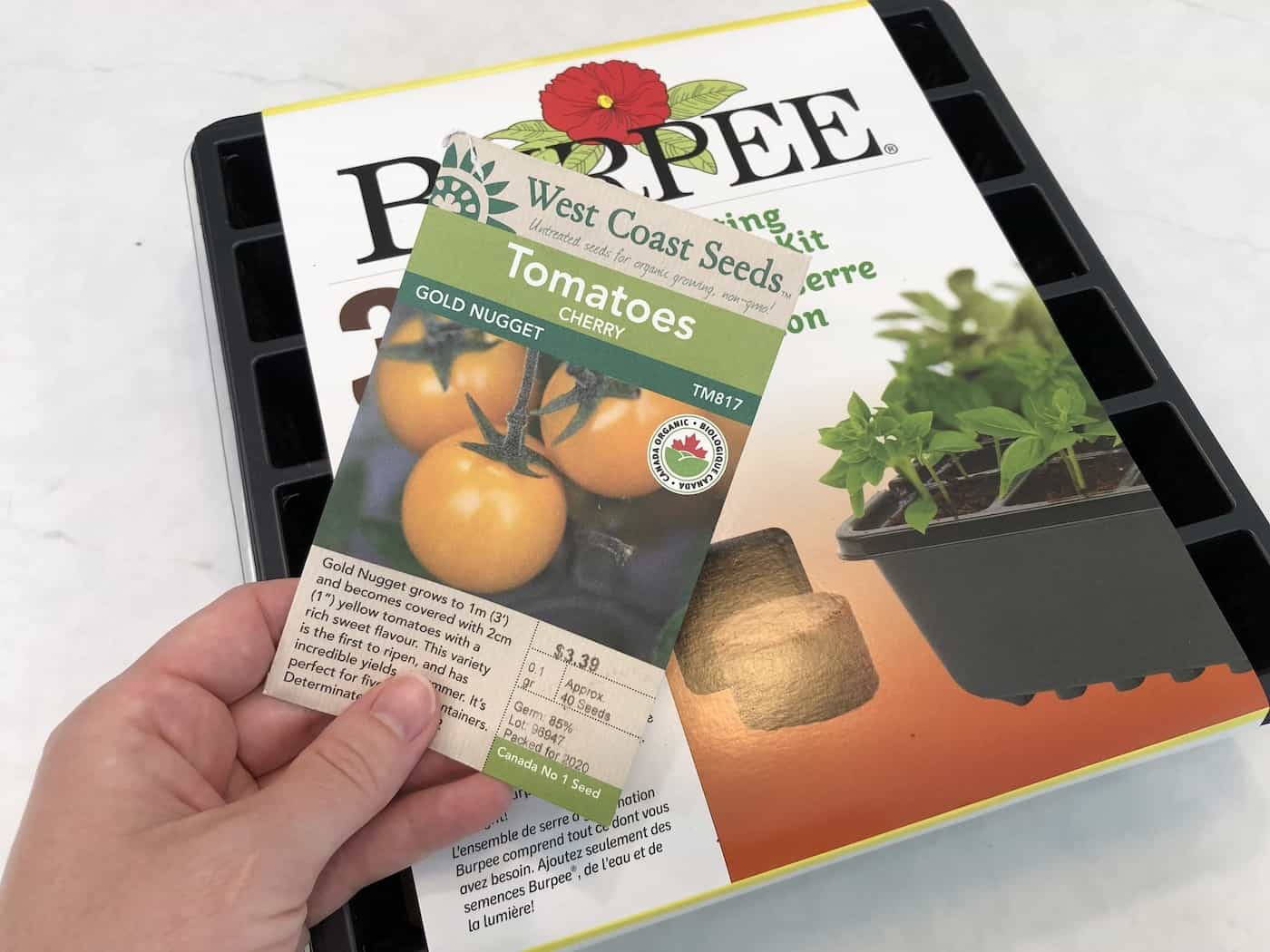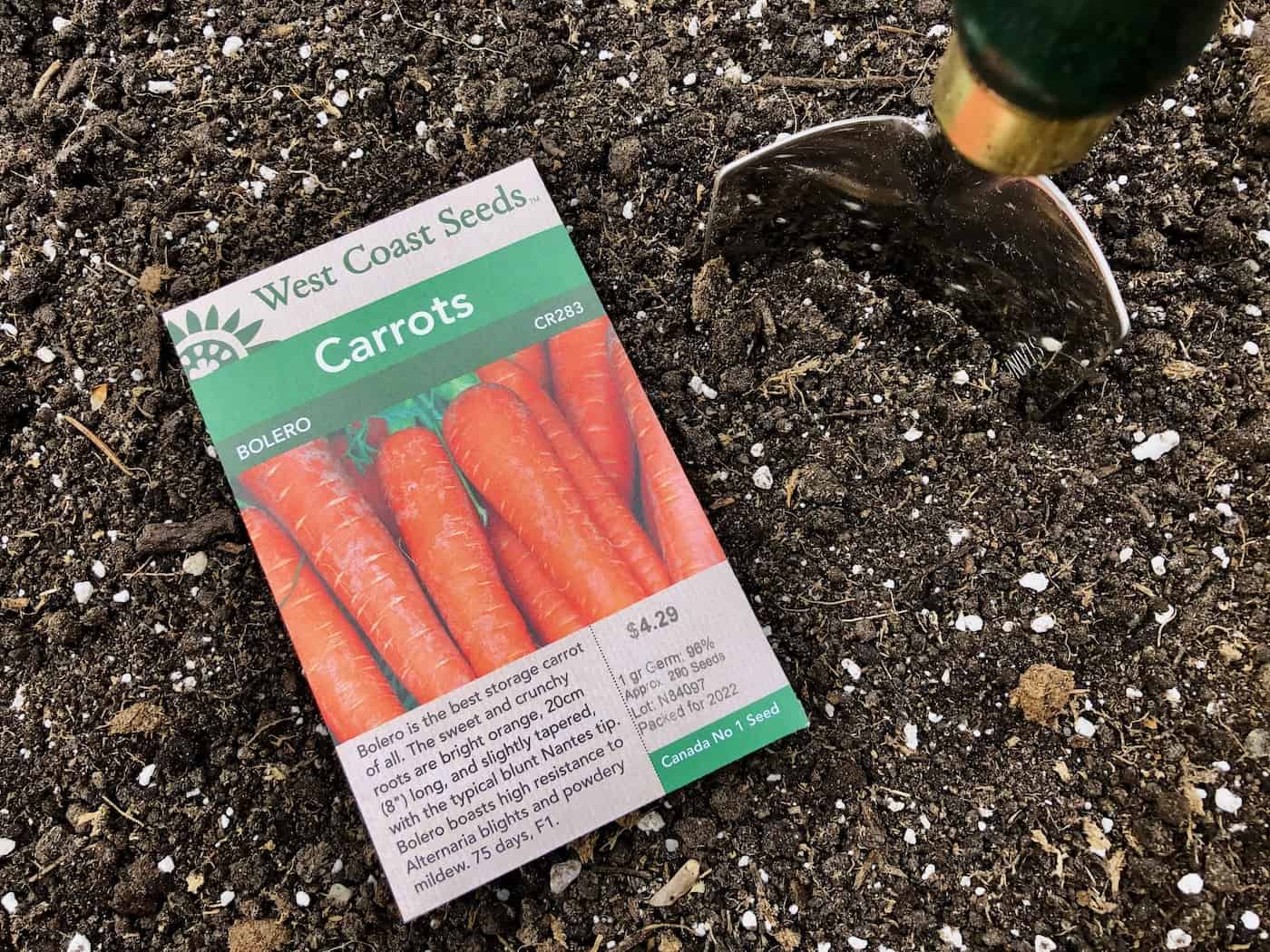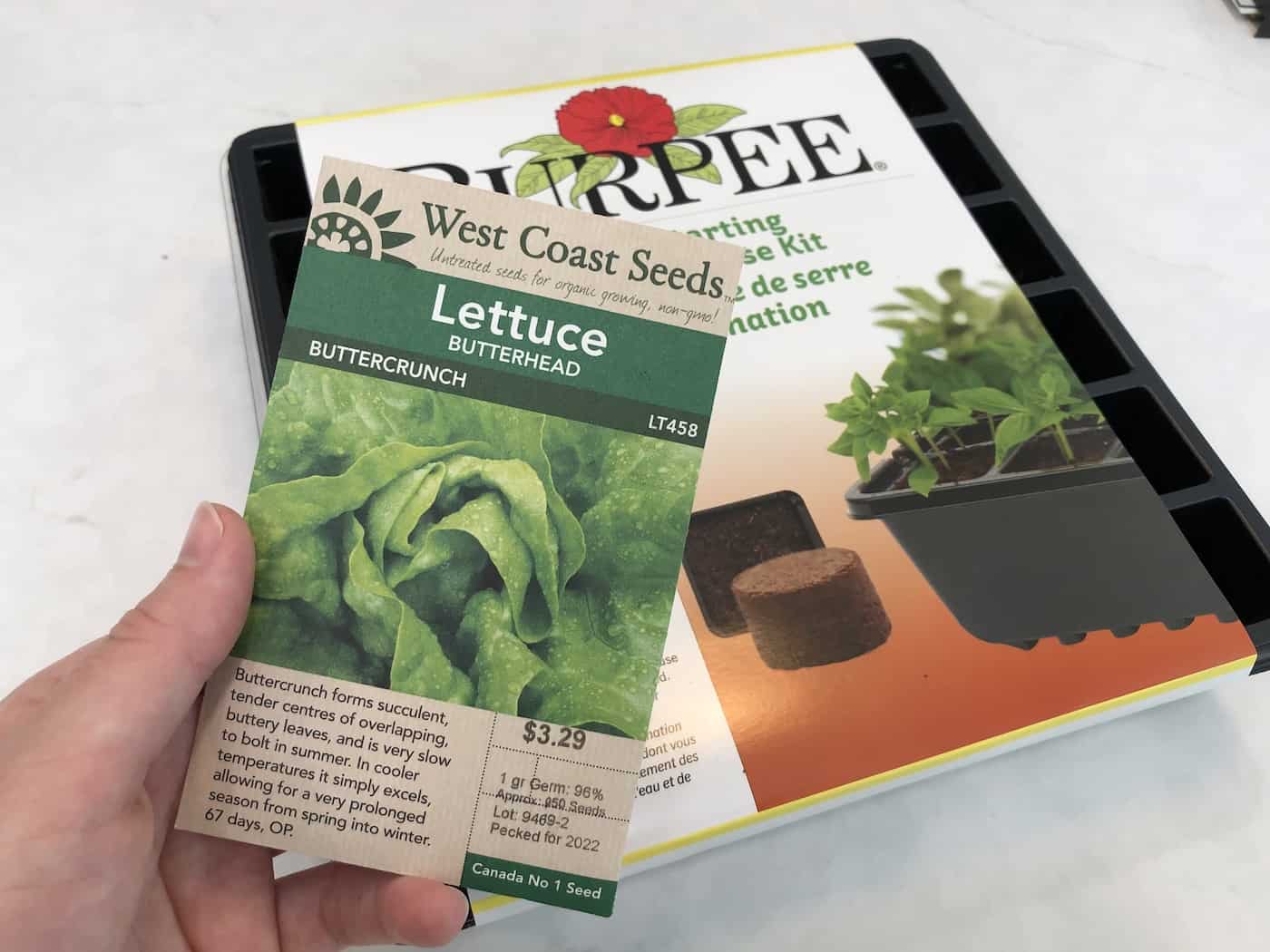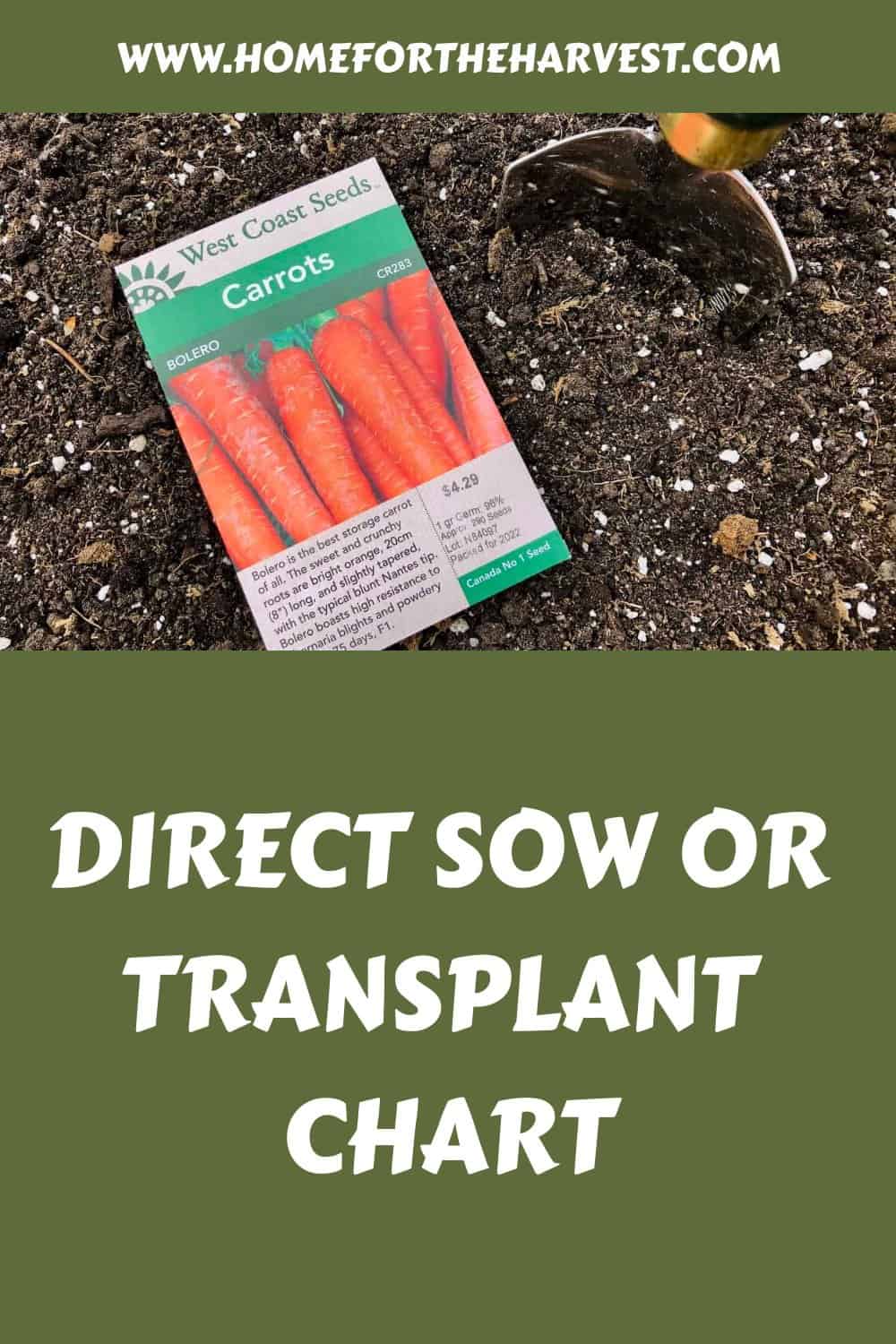Gardening is a great way to spend your time and create something beautiful, but it can be hard to know where to start. Are you supposed to direct sow or transplant? How do you even figure out which seeds are best for each method? We’ve got the answers in our new direct sow or transplant chart.
With this handy chart, all of your questions will be answered so that you don’t have any more confusion about what kind of seedlings should go directly into the ground versus those that need some extra care first.
Which seeds to direct sow or transplant?
When it comes to gardening, there are two main methods of planting seeds: direct sowing and transplanting. Direct sowing is the process of planting a seed directly into the soil outdoors. Transplanting involves starting your seeds indoors in trays or pots before transferring them outside when they’re big enough to handle. Each method has its own advantages and disadvantages, so which one you choose will depend on what type of plant you’re growing and how much time you have available for tending your garden.
Chart 1: Crops to direct sow vs. transplant
| Direct seed outdoors | Start indoors and transplant out |
|---|---|
| Arugula | Artichoke |
| Basil | Asparagus |
| Bean | Broccoli |
| Beet | Cabbage |
| Brussels sprouts | Cauliflower |
| Carrot | Celery |
| Chard | Eggplant |
| Corn | Endive |
| Cucumber | Leek |
| Kale | Lettuce |
| Mâche | Okra |
| Melon | Onion |
| Mustard | Pepper |
| Parsley | Radicchio |
| Parsnip | Scallions |
| Pea | Shallot |
| Potatoes | Tomatillo |
| Pumpkin | Tomato |
| Radish | |
| Rutabaga | |
| Spinach | |
| Squash | |
| Sunflower | |
| Turnip | |
| Watermelon | |
| Zucchini |
Seeds to direct sow
Direct sowing is a great way to plant seeds that need sunlight and warmth to grow. Some examples of plants that are perfect for direct sowing include:
- Pumpkins
- Sunflowers
- Beans
- Squash
- Corn
- Melons
Direct sowing is an ideal method for plants that don’t require a great deal of attention or maintenance after being planted, such as wildflowers, vegetables like beans and peas, herbs including cilantro and parsley, annuals such as cosmos and marigolds, biennials like foxglove and hollyhock, perennials like black-eyed Susan’s and coneflowers. This process requires minimal effort; simply spread the seeds over prepared soil (or even just sprinkle them onto the bare ground) then cover them with a thin layer of compost or mulch if desired. Afterward, make sure to water regularly until they are established.

Seeds to start indoors and then transplant the seedlings outdoors
Seeds that are usually started indoors include tomatoes, peppers, eggplants, cucumbers, and lisianthus. In cold areas, gardeners also sometimes start their pumpkins and other warm-season crops indoors so the plants have enough time to grow mature fruit. In general, these crops require more care than direct sowing; you’ll need to create a warm environment with adequate light in order to get your seeds to germinate. Transplanting should be done when there is no threat of frost and the seedlings have grown several true leaves.
Transplanting is best for plants that require more protection from extreme temperatures or weather conditions while they get established in their new environment, such as tomatoes, peppers, and eggplants. It is also beneficial for those that benefit from an early start indoors before being moved outside later in the season, like broccoli or cauliflower. Starting these types of plants inside gives you better control over their growth rate since you can monitor light levels more closely than if they were planted outdoors right away. When ready to be transplanted outside after several weeks (depending on variety), make sure to harden off your seedlings by gradually exposing them to outdoor conditions prior to full transplantation into the garden bed/container where they will live out their lives.
Knowing which seeds to direct sow or transplant is an important step in creating a successful garden. Now let’s explore the specific types of seeds that should be sown directly into your garden beds for optimal results.

Seeds to direct sow
Direct sowing is a great way to get your garden started. It’s simple, cost-effective, and allows you to enjoy the satisfaction of watching your plants grow from seedlings into full-grown plants. Carrots, peas, spinach, turnip, dill, parsley, pansy, and poppy are all examples of seeds that can be direct sown in the soil. Sweet peas and sunflowers can also be direct sown but they require more attention when it comes to watering and weeding as they tend to spread quickly. Stock, beets broccoli kale lettuce, and potatoes should also be considered for direct sowing as well.
When planting these types of seeds directly into the ground there are a few things you should keep in mind such as making sure the soil is moist enough for germination but not too wet or dry so that it won’t cause any problems with rot or molding. Additionally, make sure that you have adequate spacing between each plant so that they don’t compete for resources like sunlight water or nutrients which could lead to stunted growth or disease issues down the line. Finally if possible try adding some organic matter such as composted manure before planting which will help give your crops an extra boost of nutrition while helping retain moisture levels in the soil over time.
In conclusion, direct sowing is an easy way to get your garden off on the right foot without having to worry about transplanting delicate seedlings later on down the road. With just a little bit of planning ahead, you’ll have no problem getting those delicious vegetables growing strong in no time at all.
Direct sowing seeds is a great way to get your garden started, but for some plants, it’s best to start them indoors and then transplant them outdoors when the time is right. Let’s take a look at which seeds should be transplanted instead of direct sown.

Seeds to start indoors and then transplant
Celery, eggplant, leek, pepper, onion, and lisianthus are all examples of plants that should be started indoors in late winter or early spring before being moved outside. Starting these vegetables from seed can give you a jump start on your garden season.
Lettuce is another vegetable that’s best started indoors and then transplanted outdoors once the soil has warmed up enough for them to thrive. Planting lettuce in small pots will help ensure they don’t become overcrowded as they grow larger. When transplanting them into the ground make sure to space each plant at least 12 inches apart so they have plenty of room to spread out.
Globe artichoke also needs an indoor head start before being planted outside in the garden bed or container. Start sowing artichoke seeds 6-8 weeks prior to planting out into the garden after all danger of frost has passed. Make sure you choose a sunny spot with well-draining soil for your artichokes since too much moisture can cause root rot and other issues with this veggie crop.
Parsley is another cool-season crop that does better when started indoors first before moving it outside later on in springtime when temperatures warm up enough for it to survive without any protection from cold snaps or frosts. Parsley prefers rich soil with good drainage but doesn’t require full sun like many other vegetables do – making it perfect for growing in containers if needed.
Cabbage, cauliflower, and basil are also excellent choices for beginning indoors before transplanting outdoors when temperatures remain above freezing both during the day and at night. It is important to ensure that these vegetables do not become too hot as this can significantly reduce their growth rate.
Cucumber, tomato, melon, pumpkin, and squash should all be direct seeded into warm soils after the danger of frost has passed since these crops prefer warmer conditions than those mentioned previously which need cooler temps until ready for outdoor planting (usually mid-spring). Direct seeding cucumbers requires patience since germination takes longer than most other types of veggies; however, waiting until summer heat arrives helps speed things along nicely.
FAQs about direct sowing vs. transplanting
Is it better to direct sow or transplant squash?
Generally, direct sowing squash seeds in the garden can be more successful than transplanting established plants. This is because young seedlings are more resilient and adaptable to their environment compared to mature plants that may struggle with shock from transplanting.
However, if you have a shorter growing season or limited space, then starting your squash indoors and transplanting them into the garden can give them a head start on growth and maturity before cooler temperatures arrive. Ultimately, both methods have their advantages and disadvantages so it’s best to assess your individual situation before deciding which method will work best for you.
Should I transplant or direct sow peas?
Direct sowing is often preferred as it requires less effort and resources than transplanting. Direct sowing also helps ensure that your peas are planted in their ideal location with the correct soil depth for optimal growth. Peas can germinate in cool soil and don’t require the warmth of indoor temperatures to grow into healthy seedlings.
When should I direct sow?
When it comes to direct sowing, timing is key. Generally speaking, the best time to sow seeds directly into your garden is when the soil temperature has reached at least 55°F. This typically occurs in late spring, depending on where you live. For more details, see this soil temperature germination chart.
It’s important to check the seed packet for specific instructions as some plants require a longer growing season than others and may need to be started indoors before being transplanted outside later in the season. Additionally, pay attention to any local hardiness zone information that may be provided so you can ensure your plants will thrive in your climate.
Before you go…
With the help of this direct sow or transplant chart, you can now easily decide which seeds to direct sow and which ones to start indoors and then transplant. Gardening doesn’t have to be a daunting task anymore. With just a little bit of knowledge, you can create beautiful gardens that will last for years. So go ahead and get started on your gardening journey today with confidence.
Resources
- When to transplant an avocado tree
- When to transplant tomato seedlings to the outdoor garden
- When to transplant strawberries?
- Meditation garden: Designing and planting a natural outdoor sanctuary
References
- Int. Rice Res. Inst. (2002). Direct Seeding: Research Strategies and Opportunities
- Coleman, E. (2012). Four-Season Harvest: Organic Vegetables from Your Home Garden All Year Long, 2nd Edition
- Seeds or Transplants? How to Decide Which Is Best for Your Garden
Need more info?
Are you interested in learning more about direct sowing vs. transplanting? Here are our best articles about it!






